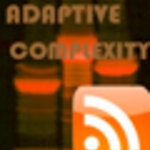Technology

Vannevar Bush, the first U.S. presidential science advisor who played a leading role initiating the Manhattan Project, was one of the great 20th century visionaries of technology - a futurist, as he might call himself today.
This 1945 essay, "As We May Think," published in The Atlantic just before the first nuclear bombs were dropped, is a classic for its prediction of something basically like the World Wide Web. It's also an example of the technocratic optimism prevalent in the postwar period. This optimism may seem a little quaint, but if we lay aside our jaded, postmodern outlook for a…

On my regular blog, I recently commented about a specific patent that I don’t think should have been issued, and I referred to a 2007 U.S. Supreme Court decision that limited patent protection for “ordinary innovation[s]” that “yield predictable results”. I picked on the particular patent that I did only because it’d just been brought to my attention; I think a very high proportion of the software patents that are out there should not have been issued. Most of them fail to meet the criteria for patents, specifically the requirements to be novel and non-obvious.
I ended that post with this…

How often have you taken a picture with a digital camera, only for it to come out looking like this? The sky’s too bright, the shaded parts are too dark, and however much one juggles with it with software, it won’t come out right.
The eye managed to adapt to it all right, effortlessly moving over the scene. With film, if one were a darkroom wizard, one could play tricks with the processing. But digital – what do we get for our multi-megapixels and our 16777216 colours?
It’s that big number that’s playing tricks with us. It is the cube of 256, so that we have have the product of 256 red…

Engineers from Oregon State University are attempting to develop a robot capable of running effortlessly over rough terrain and they're doing it with assistance from the unlikeliest of creatures--cockroaches. While they maybe unsightly, the insects are also biological and engineering marvels, and are providing the researchers with what they call "bioinspiration" in their efforts to build a running robot.
Their latest findings – just published in the professional journal Bioinspiration and Biomimetics – outline how animals use their legs to manage energy storage and expenditure, and why…

Water management has always been a big thing in China. This morning I read about the South-North Water Project, in which China is starting to divert huge quantities of water from the sub-tropically wet south-west of the country, moving it to the arid north and north-east.
The project is not without human cost, as this article Migrants bear sacrifice for China's south-north water diversion project from China's own news agency shows.
This article China redirects trillions of gallons of water to arid north from the Daily Telgraph is even more bearish about the difficulties.

Looks like your website is under attack from supernatural forces...
First of all: Nostradamus demolishes "atheism"
__________________________________________________ __wait, wait...
I forgot something...
you little shits even talk about me....
GOATS ON FIRE....
http://www.youtube.com/watch?v=ssFaIhJkLsk
LIBERATION!
Sing from the rooftops:
"Atheism is dead!"
http://www.conspiracycafe.net/forum/index.php?/topic/25104-atheist-ap...
http://www.youtube.com/watch?v=sK50So-yYRU
BYE BYE ATHEISM
these little insignificant fools try to use science to destroy every mystery in the universe...
but not…

Consider this an open letter to Hank, not as an act of aggression but because, hey, I'm due a blog post for today anyway.
We need a "Computational Science" section. It's okay for stuff that relates to a science subfield to go there-- computational biology in Biology, galaxy crashing in Space, genome breaking in Medicine. But there are some comp sci things that really belong in their own area. Just sticking it in Culture->Technology doesn't work, because it's not about culture or stuff, but bonafide science.
This might break your Rule of Six, since each of the 6 toplevels…

The United States, Russia and a United Nations arms control committee are discussing methods to, "strengthen Internet security and limiting military use of cyberspace."
It interesting how different the United States and Russia fundamentally view the problem of Internet security and the militarization of cyberspace. The Russians view is that the solution should be through an international treaty akin to arms control of nuclear, biological, and other weapon systems. Another way to look at is that Russia prefers a state to state solution seeing the largest potential of attack coming…

Discussion of the rise in diagnosed autism is a controversial topic, and I applaud one company that is sidestepping the entire 'why' and 'who is at fault' issue and tackling it like good capitalists. MSNBC writes about Aspiritech's program for training autistics in comp sci -- specifically the area of software testing, bug discovery, and data accuracy. They write:
"Autism seen as asset, not liability, in some jobs. A new movement helps hone unique traits of disorder into valuable skills [...] now some revolutionary companies see autism as something else: a resource."
This is progressive…

University of Toronto quantum optics researchers have discovered new behaviors of light within photonic crystals that could lead to faster optical information processing and compact computers that don't overheat.
"We discovered that by sculpting a unique artificial vacuum inside a photonic crystal, we can completely control the electronic state of artificial atoms within the vacuum," says Ma, a PhD student under John's supervision and lead author of a study published in the Dec. 4 issue of Physical Review Letters. "This discovery can enable photonic computers that are more than a…